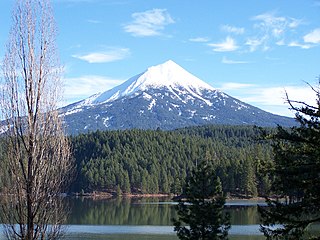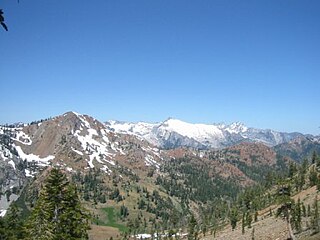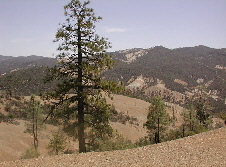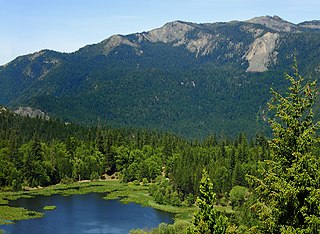| Black Butte | |
|---|---|
| Highest point | |
| Elevation | 7,455 ft (2,272 m) NAVD 88 [1] |
| Prominence | 2,436 ft (742 m) [2] |
| Listing | California county high points 27th |
| Coordinates | 39°43′36″N122°52′21″W / 39.726746503°N 122.872421264°W Coordinates: 39°43′36″N122°52′21″W / 39.726746503°N 122.872421264°W [1] |
| Geography | |
| Location | Glenn County, California, U.S. |
| Parent range | Central Northern California Coast Range |
| Topo map | USGS Plaskett Meadows |
Black Butte is a mountain butte located in the Northern Coast Ranges of California south of Mendocino Pass. It rises to an elevation of 7,455 feet (2,272 m) north of the Black Butte River.

A mountain is a large landform that rises above the surrounding land in a limited area, usually in the form of a peak. A mountain is generally steeper than a hill. Mountains are formed through tectonic forces or volcanism. These forces can locally raise the surface of the earth. Mountains erode slowly through the action of rivers, weather conditions, and glaciers. A few mountains are isolated summits, but most occur in huge mountain ranges.
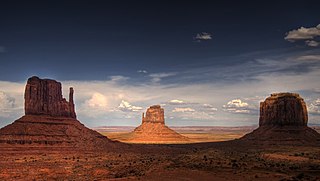
In geomorphology, a butte is an isolated hill with steep, often vertical sides and a small, relatively flat top; buttes are smaller landforms than mesas, plateaus, and tablelands. The word "butte" comes from a French word meaning "small hill"; its use is prevalent in the Western United States, including the southwest where "mesa" is used for the larger landform. Because of their distinctive shapes, buttes are frequently landmarks in plains and mountainous areas. In differentiating mesas and buttes, geographers use the rule of thumb that a mesa has a top that is wider than its height, while a butte has a top that is narrower than its height.

California is a state in the Pacific Region of the United States. With 39.6 million residents, California is the most populous U.S. state and the third-largest by area. The state capital is Sacramento. The Greater Los Angeles Area and the San Francisco Bay Area are the nation's second and fifth most populous urban regions, with 18.7 million and 8.8 million residents respectively. Los Angeles is California's most populous city, and the country's second most populous, after New York City. California also has the nation's most populous county, Los Angeles County, and its largest county by area, San Bernardino County. The City and County of San Francisco is both the country's second-most densely populated major city after New York City and the fifth-most densely populated county, behind only four of the five New York City boroughs.
Contents
The mountain on the Mendocino National Forest is the highest point in county of Glenn County. In spite of the difference in elevation between the river valley at 2,800 feet (850 m) and Black Butte, the summit's prominence is moderate due the neighboring 6,500-foot (1,980 m) Plaskett Meadows. [3] The high elevation of the mountain and plateau bring heavy winter snowfall and a low average annual temperature. [4] US Forest Highway 7, a dirt road connection between the eastern and western segments of State Route 162 passes to the north of Black Butte. However, this route is closed in winter due to heavy snowfall.

The Mendocino National Forest is located in the Coastal Mountain Range in northwestern California and comprises 913,306 acres (3,696 km2). It is the only national forest in the state of California without a major paved road entering it. There are a variety of recreational opportunities — camping, hiking, mountain biking, paragliding, backpacking, boating, fishing, hunting, nature study, photography, and off-highway vehicle travel.

State Route 162 runs roughly west–east from U.S. Route 101 near Longvale, in Mendocino County, to Oroville, in Butte County. For most of its length, it is a two lane, undivided highway. The highway is broken into two pieces; the state's sponsorship of the road ends where it enters the Mendocino National Forest in Mendocino County where it becomes an unimproved dirt road maintained by the U.S. Forest Service as Forest Highway 7 (FH 7). State Route 162 begins again at the eastern boundary of the National Forest in Glenn County, some 30 miles (48 km) west of Willows.


